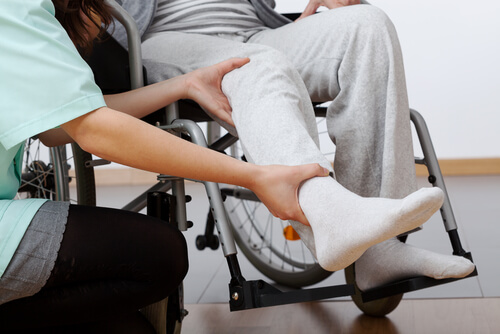
Attention to the living environment is essential in insuring the safety and comfort of someone with Parkinson’s disease. Because people with Parkinson’s often have compromised balance, unstable posture, poor coordination, and a shuffling gait, they are at high risk for tripping and falling. The use of walkers, canes, and wheelchairs is often helpful for mobility. Whether or not someone with uses these devices, however, care should be taken to minimize or eliminate obstacles that may pose a tripping hazard or prevent easy navigation of rooms with a walker or wheelchair. Area rugs, exposed electrical cords, raised thresholds between rooms, furniture, and lamps are some of the most common hazards for people with Parkinson’s. Make sure that furniture is placed so that someone in a wheelchair can easily move around it, that decorative items such as sculptures are placed out of the way, and that area rugs are removed or tacked down. Insuring that electrical cords are well out of the way is also essential.
In addition to preventing falls, adjusting the living environment for someone with Parkinson’s includes making sure that doors are easy to open, lights are easy to switch on, and personal items like soap and toilet paper are easy to access without having to reach for them. Replacing door-knobs with handles that are easier for someone with motor impairments to grasp, and insuring that lights can be accessed by someone in a wheelchair, are good steps to take. Sharp edges and corners in the home, such as on kitchen countertops, should be covered. In some cases, it can be helpful to attach pieces of rope or string to cupboard door handles to make them easier to open. Adapting the living environment to the needs of someone with Parkinson’s can increase their comfort and safety, as well as your ability to care for them with confidence and peace of mind.
Edison Home Health Care is happy to assist you or any loved one looking for home care services for Parkinson’s related care needs. Give us a call at 888-311-1142, or fill out a contact form and we will respond shortly.









